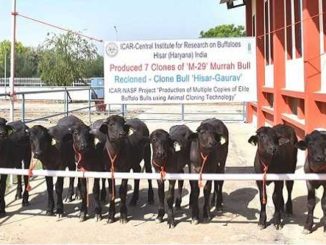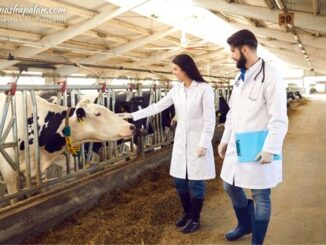Stem cells are very important in veterinary medicine for various reasons. Numerous stem cell treatments are now being administered to animal patients; some of these have proven beneficial in the market, such as mesenchymal stem cell (MSC) therapy for tendinopathies in equines. In addition, a great deal of research is conducted using animal models to examine the properties and potential of stem cells for use in future human treatments. Thus, in the relatively new field of stem cell research, there is an intrinsic link between veterinary and human medicine. Collaboration between veterinary and human sectors yields multiple groundbreaking stem cell breakthroughs.
Stem cells are defined as unspecialized cells that can self-renew through cell division and can undergo significant differentiation into one or more cell/tissue types under certain physiological or cultural conditions sometimes even after prolonged periods of inactivity. Stem cells differ from other body cells in three ways: first, they can divide and regenerate for a long time; second, they are unspecialized, which means they cannot perform specific bodily functions; and third, they can differentiate into specialized cells like brain, blood, or muscle. Stem cell research can help us understand how severe illnesses like cancer and birth defects emerge. One day, stem cells may be used to generate tissues and cells that can treat a variety of diseases. Examples include diabetes, arthritis, heart disease, Parkinson’s disease, Alzheimer’s disease, and spinal cord injuries. Stem cells are found in both adult and embryonic cells.
There are two primary sources of stem cells: adult bodily tissues and embryos. Adult stem cells are the cells that the human body has throughout its lifetime. The body can use these stem cells anytime when needed. Adult stem cells, sometimes referred to as tissue-specific or somatic stem cells, have been present throughout the body since the beginning of embryonic development. The cells are more specialized than embryonic stem cells, despite not having any specialization. They remain in this state until the body needs them for a specific function, such as skin or muscle cells. Embryonic stem cells are present from the very beginning of pregnancy and are localized in the inner cell mass. With the right stimuli, cells can differentiate into skin, blood, or any other type of cell that the body needs. The blastocyst lasts for around 5 days before the embryo implants in the uterus or womb during the early stages of pregnancy. At this time, the stem cells begin to differentiate. When it comes to cell types, embryonic stem cells are more versatile than adult stem cells.
Stem cells are categorized as follows based on their ability to differentiate into different types of cells:
Totipotent stem cells: These stem cells possess the ability to differentiate into any form of cell. As soon as the zygote begins to divide, totipotent cells emerge.
Pluripotent stem cells: These stem cells have the ability to differentiate into nearly any type of cell. Early embryonic cells are pluripotent.
Multipotent stem cells: These stem cells have the ability to differentiate into a variety of closely related cell types. Hematopoietic stem cells in adulthood, for instance, can differentiate into platelets or red and white blood cells.
Based on sources of stem cells these are: embryonic stem cells, umbilical cord stem cells, fetal stem cells, adult stem cells.
Stem cells in Veterinary Practice
These days, a number of veterinary diseases can be treated with stem cell therapy. The high therapeutic potential of these cells, which can be administered as freshly extracted, cultured, autologous, or allogenic cells, makes this possible. Stem cells are routinely employed to treat various tissue conditions in equines and canines. These cells were also employed to treat respiratory and renal problems in cats, as well as a number of inflammatory conditions.
Cell therapy has been a useful tool in veterinary medicine since the early 2000s; it was initially used to heal tendon injuries in horses. Research into animal regenerative medicine is ongoing. In recent years, significant progress has been made in the development of safe and efficient stem cell therapies. Significant progress has been made with Mesenchymal Stem Cell (MSC) therapy for wound healing and the treatment of many disorders, such as Focal segmental glomerulosclerosis (FSGS) and Infectious bursal disease (IBD). MSC treatments have had noteworthy outcomes, particularly for orthopedic problems in dogs and horses. Numerous studies encouraging results point to the potential of stem cell therapy in the future for the treatment of a variety of animal illnesses but there are still some issues that need to be fixed.
There are several experimental uses of stem cells such as:
- Biomedical models for pharmaceutical research
- Preclinical evaluation of stem cells for human
- Conservation of endangered species
- Stem cell banking
There are several clinical uses of stem cells such as:
- Organ transplant therapy
- Treatment of musculoskeletal and nerve injuries
- Assisted reproduction: spermatogonial stem cells
- Degenerative diseases
Based on some analyses, cell therapy has been shown to be a labor-intensive, cost-effective, and safe technique that can be used to a range of mammal species due to their shared morphological tissue foundations. Among the stem cells used in treatments, MSC (derived from bone marrow or adipose tissue) have the best chance of being therapeutically successful due to their ability to support tissue repair, immunomodulation, paracrine factor activation, and perception of cell homing signals. As a result, the use of these cells has increased in companion and competitive animals to treat ailments of the tendons, muscles, cartilage, bones (such as osteoarthritis), and other tissues that may be inherited or created due to exercise, malnutrition, or other circumstances.
References
- Black LL, Gaynor J, Gahring D, Adams C, Aron D, Harman S, Gingerich DA, Harman R. Effect of adipose-derived mesenchymal stem and regenerative cells on lameness in dogs with chronic osteoarthritis of the coxofemoral joints: a randomized, double-blinded, multicenter controlled trial. Veterinary Therapeutics. 2007 Jan 1;8(4):272.
- Lodi D, Iannitti T, Palmieri B. Stem cells in clinical practice: applications and warnings. Journal of Experimental & Clinical Cancer Research. 2011 Dec;30(1):1-20.
- Prządka P, Buczak K, Frejlich E, Gąsior L, Suliga K, Kiełbowicz Z. The role of mesenchymal stem cells (MSCs) in veterinary medicine and their use in musculoskeletal disorders. Biomolecules. 2021 Aug 2;11(8):1141.
- Ribitsch I, Burk J, Delling U, Geißler C, Gittel C, Jülke H, Brehm W. Basic science and clinical application of stem cells in veterinary medicine. Bioreactor Systems for Tissue Engineering II: Strategies for the Expansion and Directed Differentiation of Stem Cells. 2010:219-63.
- Voga M, Adamic N, Vengust M, Majdic G. Stem cells in veterinary medicine—current state and treatment options. Frontiers in veterinary science. 2020 May 29;7:278.








Be the first to comment